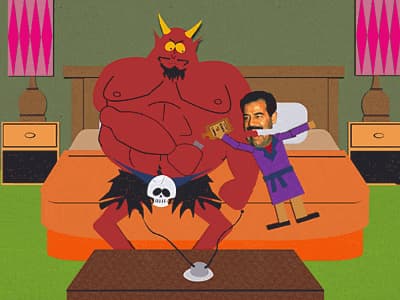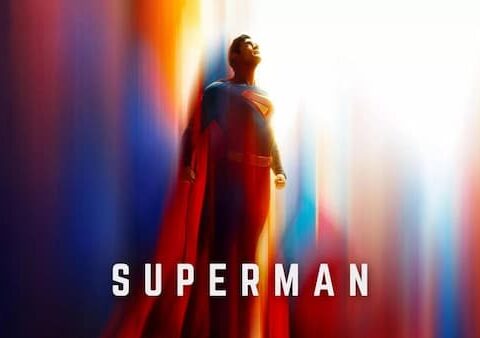The recent War of the Worlds movie was a total flop and has been trashed by pretty much everyone.
Some have called it the worst movie of all time.
I had no interest in it anyway: but the H.G Wells classic remains one of the best, and probably the most visceral, science fiction stories ever told.
That’s arguably because the concept is so basic, but also somewhat conceivable and legitimately frightening.
And it probably feeds into modern day anxieties, paranoia and preoccupations, even more than it did a hundred years ago with its earlier audiences.
As it’s Halloween, I wanted to write about something loosely in the realm of ‘horror’. But I also think it’s interesting to examine War of the Worlds in real-world terms and in the context of the contemporary zeitgeist.
And for one thing, could real-world events soon occur that mimic the famous science fiction story? And, if so, what would we do?
There have been numerous adaptations of the story over the decades – not just the infamous Orson Welles radio production in the 1930s. It’s probably the most adapted or reimagined story in modern fiction. Maybe after Mary Shelley’s Frankenstein.
So much so that the reimaginings have become a little redundant.
Even the 2003 Spielberg film with Tom Cruise felt tired and unneeded. So why anyone thought this latest version was worthwhile is a mystery.
Of course the most famous version of War of the Worlds (other than the original novel) remains that notorious 1938 radio broadcast – and its alleged mass panic. I’m possibly weird for this, but I sometimes listen to the audio of that broadcast in bed, falling asleep to it.
We’ll come back to that in a moment: because I want to discuss War of the Worlds in a real-world context and in terms of future events we might potentially face.
But as far as screen adaptations go, the greatest War of the Worlds by far is still the 1953 film.
It still wholly outshines all later adaptations, including the big-budget Tom Cruise blockbuster.
I love this version. It’s genuinely intense. And for 1953, the production and the visual effects are outstanding, as are the designs. It also has a distinctive visual style and colour palette that makes it highly absorbing and creates a surreal, dream-like aesthetic.
That era was rich with low-budget sci-fi, particularly alien-related stories. This was at the dawn of the modern UFO phenomena, particularly the flying saucer craze in the late forties and early fifties.
There’s a retro charm to all that stuff, even the bad stuff.
When films like this – and other UFO-related sci-fi flicks – were being produced, a real-world subculture of UFO fascination was happening, with books and journals being published, alleged UFO photos appearing (many of them clearly faked), and things like Contactee cults beginning to appear.
This was, after all, during the years immediately following Kenneth Arnold’s ‘flying saucer’ sighting in 1947 and the Roswell Incident.
It’s worth saying that something like this War of the Worlds film was released at a time also when things like Project Bluebook were in operation and the US government was involved in the growing mystery (either in investigating or in covering up, depending on your perspective).
While the 1953 War of the Worlds therefore feels like a product of its time, it doesn’t suffer the low-budget B-movie vibe of most vintage sci-fi movies of this era.
If you’ve never seen that 1953 film, check it out some day.
Also, there’s a recent British mini series of War of the Worlds that’s fairly engaging, mostly because it returns the setting to Victorian England (which is fitting for a novel published in 1898). If you have access to the ITVX app, it’s currently available for streaming there and is only three episodes.
But in more real-world terms, the Martian attack depicted in War of the Worlds is unsettling because it asks us what we would do if anything like that really happened.
H.G Wells claimed he intended his original novel to be a commentary on the evils of violent imperialism: the invasive, destructive terror of Colonialism from the indigenous peoples perspective.
But no one thinks of it in those terms anymore. We all just think about the aliens and their monstrous machines.
Facing an otherworldly force with unknown technology, incinerating human beings, wiping out whole cities, while we have no concept of their motivation or ideology.
We don’t even know what they look like. That’s actually a clever part of the story: the fact that we don’t actually see the creatures inside the machines, so we have no sense of who they really are.
What *would* happen in real life?
If the military was unable to wage any kind of effective defense or counter – as is the case in the films – we would be able to do nothing.
We’d lose.
For one thing, the kind of mass panic supposedly created by the Orson Welles radio broadcast in 1938 would happen for real.
Of course the other thing to consider is the possibility of the staged or fake alien invasion – an increasingly popular theory first suggested in the nineties and that more and more people now believe is going to happen.
When I first read about this theory (particularly Serge Monast’s predictions), it was fringe stuff: but it has become increasingly mainstreamed. When all the drone hysteria was occurring last year, plenty of online chatter speculated it was Project Blue Beam in action (I disagreed).
To the extent that, should any kind of War of the Worlds type scenario ever unfold, it’s possible as many people would believe it to be a staged psy-op as those who believe it to be a real alien invasion.
Which creates a bit of a dilemma, actually – for those plotting the hypothetical hoax attack.
But if the alleged fake/staged alien invasion is a real conspiracy planned for the future, you’d have to wonder if War of the Worlds might serve as a conceptual blueprint.
If so, the famous mass panic caused by the 1938 radio broadcast would ironically also serve as an experimental blueprint: as in that case many people supposedly took a clearly fictional presentation to be a real-world crisis unfolding in real time.
If people could be fooled back then merely via the very limited medium of radio (and in a scenario where the broadcasters weren’t even trying to fool anyone), imagine how many more sophisticated tools and technologies are available today for deliberate mass deception purposes.
It’s something to think about.
I don’t know if the alleged fake alien attack will ever actually come to pass. But I believe the concept (and therefore conceptual plans for its implementation) has been real. No less a figure than Werner Von Braun supposedly attested to this notion on his deathbed.
I also don’t know if we’ll ever face a real War of the Worlds type attack from outer space invaders. But I’d be astonished if governments and militaries (especially the United States) haven’t gamed such a scenario and developed theoretical plans for what to do in such an extreme event.
That’s why H.G Wells’s little science fiction story is still so resonant. It’s still a frightening concept, and it’s still within the realms of possibility.





I think this piece would have benefited greatly from some research into HG Wells. Here is a short excerpt from this Wikipedia page.
https://en.wikipedia.org/wiki/Political_views_of_H._G._Wells
“World government
His most consistent political ideal was the world state. He stated in his autobiography that from 1900 onward he considered a World State inevitable. He envisioned the state to be a planned society that would advance science, end nationalism, and allow people to progress by merit rather than birth. Wells’s 1928 book The Open Conspiracy argued that groups of campaigners should begin advocating for a “world commonwealth”, governed by a scientific elite, that would work to eliminate problems such as poverty and warfare.[5] In 1932, he told Young Liberals at the University of Oxford that progressive leaders must become liberal fascists or enlightened Nazis who would “compete in their enthusiasm and self-sacrifice” against the advocates of dictatorship.[6][7] In 1940, Wells published a book called The New World Order that outlined his plan as to how a World Government would be set up. In The New World Order, Wells admitted that the establishment of such a government could take a long time, and be created in a piecemeal fashion.[8] “
https://corbettreport.com/how-to-fake-an-alien-invasion-transcript/